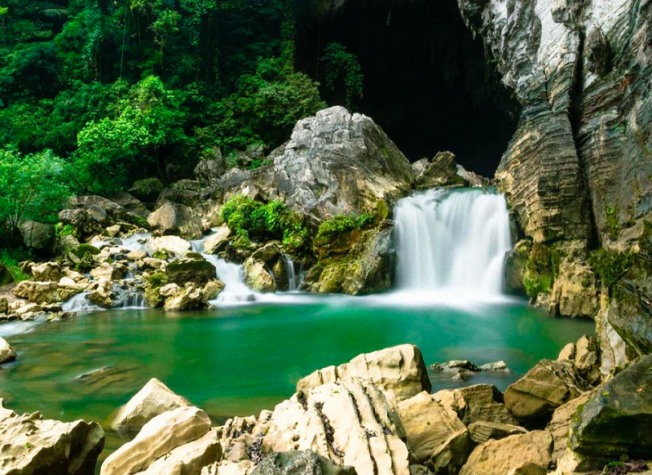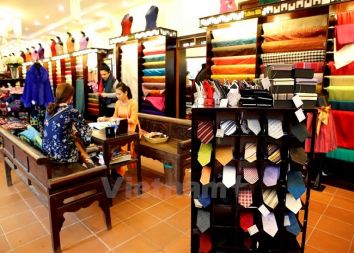Hanoi Travel Guide
Hanoi Vietnam
Hanoi, Capital of Vietnam, is the second biggest city of the country after Saigon / Ho Chi Minh City in the South. With the population of about 9 million people, Hanoi is the centre for Economy, Politic, Culture of the whole country.
Hanoi 's History: According to history book, Hanoi has been inhabited since at least 3000 BC. The Cổ Loa Citadel in Dong Anh district served as the capital of the Âu Lạc kingdom founded by the Shu emigrant Thục Phán after his 258 BC conquest of the native Văn Lang.
In 197 BC, Âu Lạc Kingdom was annexed by Nanyue, which ushered in more than a millennium of Chinese domination. By the middle of the 5th century, in the center of ancient Hanoi, the Liu Song Dynasty set up a new district called Songping, which later became a commandery, including two districts Yihuai and Suining in the south of the Red River (now Từ Liêm and Hoài Đức districts) with a metropolis (the domination centre) in the present inner Hanoi. By the year 679, the Tang dynasty changed the region's name into Annan (Pacified South), with Songping as its capital.
In order to defeat the people’s uprisings, in the later half of the 8th century, Zhang Boyi , a Tang dynasty viceroy, built Luocheng (La Thanh or La citadel, from Thu Le to Quan Ngua in present-day Ba Dinh precinct). In the earlier half of the 9th century, it was further built up and called Jincheng (Kim Thanh or Kim Citadel). In 866, Gao Pian, the Chinese Jiedushi, consolidated and named it Daluocheng (Dai La citadel, running from Quan Ngua to Bach Thao), the then-largest citadel of ancient Hanoi.
In 938, Ngo Quyen defeated Chinese in Bach Dang River (in the gulf of Tonkin) with very tactical way, finished 1.000 years of Chinese Domination in Vietnam and started the first independent country.
In 944, Ngo Quyen died and Vietnam was divided into 12 regions until 968 when Dinh Bo Linh unified the whole country and based the Capital in Hoa Lu, Ninh Binh. This area was still the Capital under the first Le Dynasty (981 – 1009).
In 1010, Ly Thai To found the Ly Dynasty and moved the Capital to Hanoi area again and named it Thang Long (Ascending Dragon) after seeing Dragon flying up into the sky when he travelled to here.
In 1400, Ho Quy Ly started the Ho Dynasty and move Capital to Thanh Hoa area. Thang Long was changed it’s name into Dong Do (Eastern Capital).
In 1428, Le Loi founded the second Le Dynasty. He chose this city to be the Capital again and named it Dong Kinh (Eastern Capital).
In 1802, Nguyen Anh started the Nguyen Dynasty and Hue was chosen as the Capital for the country. The city was changed it’s name into Hanoi as it is called nowadays. Hanoi means City inside the river as this city is surrounded by Red River and To Lich River.
In 1945, after second world war finished, the last King of Nguyen Dynasty abdicated on 30 August, that marked the end of royal family in Vietnam and on 2nd Sep 1945, Ho Chi Minh declared the independence of Vietnam to start Democratic Republic of Vietnam. Hanoi was chosen again to be the Capital of the country.
From 1946, Hanoi under the control of French until 1954 when French lost to Communist in Dien Bien Phu and they had to leave Vietnam.
From 1954 – 1975, Hanoi was the Capital of Communist Government while Sai Gon was the Capital of South Vietnam.
On 30 Apr 1975, Communist defeated South Vietnam Government and Hanoi become the Capital for the whole country as it is nowadays.
Hanoi Climate and Weather Conditions: Hanoi weather represents the typical climate of tropical monsoon type in Northern Vietnam. The city has the hot temperature in summer with high rainfall and the dry cold winter. it also has a large amount of sunlight and a relatively very high humidity all throughout the year.
Although the weather is divided into two main seasons: rainy season (from January to September), and dry season (from October to April), thank to transition months, Hanoi still experiences all four seasons: spring, summer, autumn and winter.
Historical Monthly Average Temperature & Rainfall for Hanoi.
| Months | High / Low (°C) | Rain |
|
January |
20.7° / 14.6° |
4.1 days |
|
February |
23.4° / 16.5° |
2.1 days |
|
March |
26.9° / 19.3° |
4.1 days |
|
April |
30.6° / 21.7° |
7.3 days |
|
May |
34.5° / 24.9° |
7.0 days |
|
June |
35.6° / 26.9° |
8.0 days |
|
July |
34.1° / 26.5° |
8.0 days |
|
August |
32.8° / 25.5° |
8.0 days |
|
September |
31.7° / 24.3° |
5.0 days |
|
October |
29.3° / 21.9° |
4.0 days |
|
November |
26.7° / 19.6° |
2.0 days |
|
December |
21.9° / 15.0° |
1.0 days |
Best Time to Visit Hanoi: Autumn (from September to November) and Spring (from February to April) are two best seasons to visit Hanoi when the weather is more pleasant with milder temperatures. In winter, Hanoi is quite cold when the temperatures can fall below 10ºC (50ºF) and getting hotter in the summer temperature averaging around 28-35ºC (82º-95ºF).
Best of Vietnam

Best Vietnamese Food You Have to Try in Vietnam
Best Food in Vietnam: Vietnamese Traditional Food is top World well known to be both healthy and...

10 Best National Parks in Vietnam
Vietnam Travel Guide: If you look for the Best Wildlife Discovery Experience in Vietnam, here are...
Read More
Best Souvenir to Buy in Vietnam
If you look for Best Things to Buy when traveling to Vietnam to bring home for your family & friends...
Read More
The 10 Best Places to Visit in Vietnam
Vietnam Travel Guide: Home to an extensive collection of historical and cultural attractions,...
Read More
Top 10 Museums You Should Not Miss in Vietnam
Vietnam, 4.000 years old country has a unique and lengthy history, culture with 54 ethnic groups. It...
Read MoreFind your trip
Vietnam Best Tours
Vietnam Car Rental
Vietnam Travel Blog
- Vietnamese People: Origin, History, Culture and Traditions
- Vietnam Currency: Best ATM and Places to Exchange Money
- Vietnam Map: Regions, Cities & Provinces Map of Vietnam
- What is illegal Things in Vietnam: Rules & Laws for Tourists
- Best Time to Travel to Vietnam to Avoid the Bad Weather
- Vietnam News: Population & Religions of 54 Ethnic Groups









